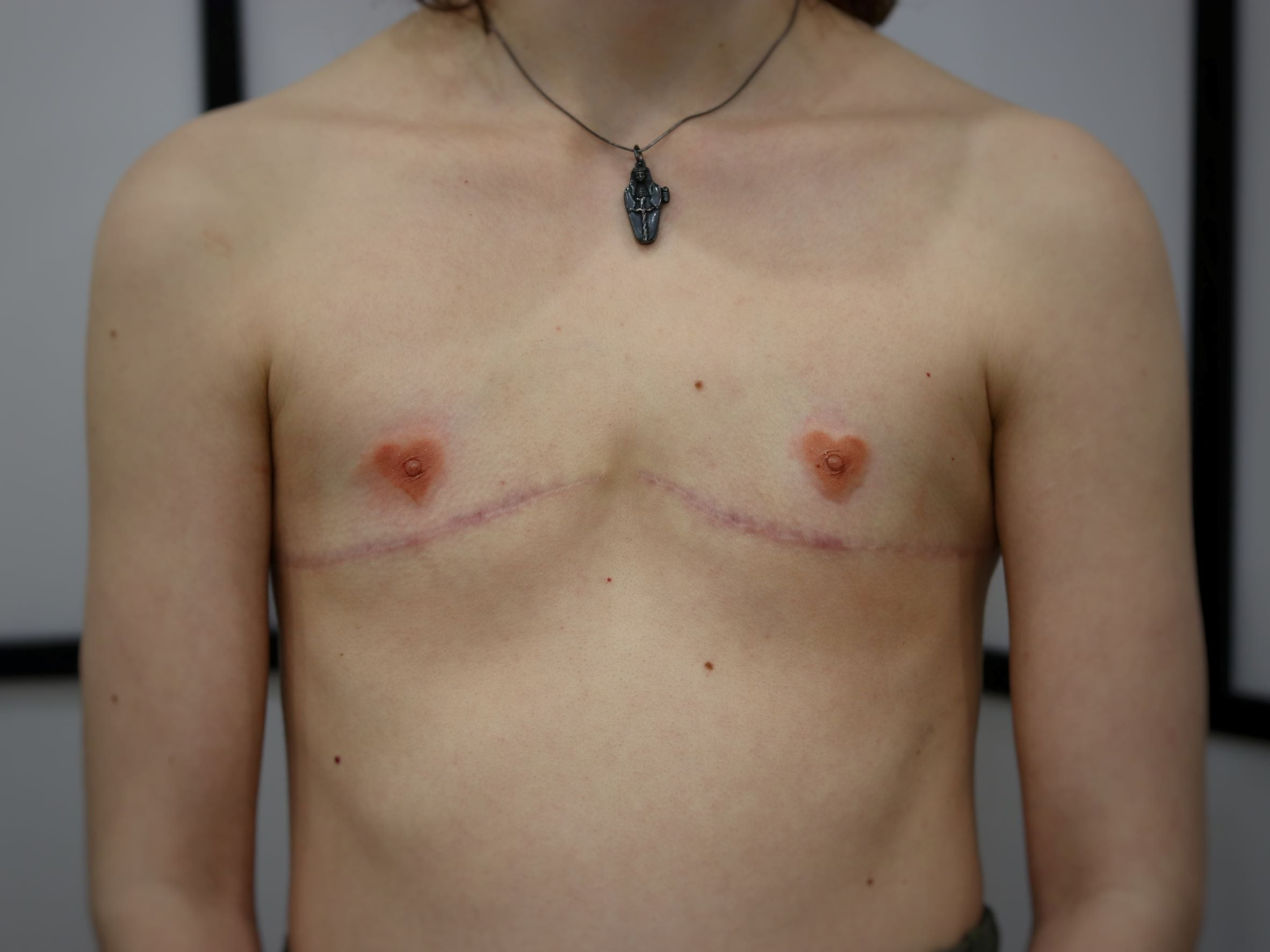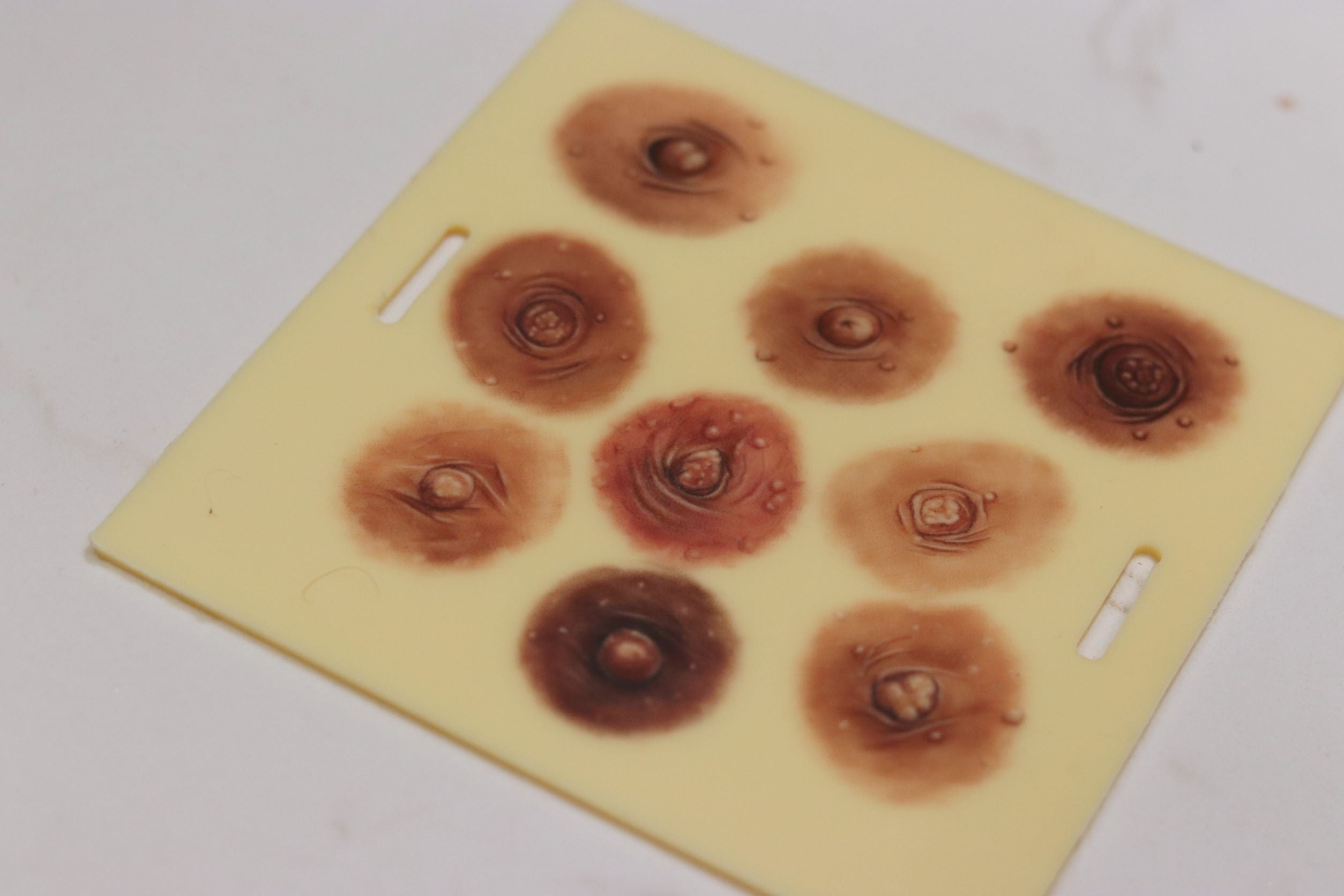Paramedical Tattooing, also known as medical tattooing or cosmetic tattooing, is an innovative field that focuses on restoring and enhancing the appearance of skin affected by medical conditions, surgeries, or trauma. Going beyond traditional cosmetic enhancements, paramedical tattoos offer a unique solution for individuals seeking to reclaim their confidence and body image.
This specialized tattooing technique uses artistic skills to mimic natural skin features, helping clients heal from experiences that have altered their physical appearance. From creating realistic areolas after mastectomies to camouflaging scars and restoring natural skin tones, paramedical tattoo artists are making a profound impact on people’s lives.
To delve deeper into this transformative art, we spoke with Lynnea Kamyszek, a talented tattoo artist based near Vancouver, Canada. Lynnea specializes in reconstructive paramedical tattooing and permanent makeup, offering her clients both aesthetic enhancements and deeply meaningful restorative procedures.
 Close-up of paramedical tattoo artist Lynnea Kamyszek working on a client, showcasing her expertise in restorative tattooing.
Close-up of paramedical tattoo artist Lynnea Kamyszek working on a client, showcasing her expertise in restorative tattooing.
Lynnea shares her journey into paramedical tattooing: “I’m Lynnea, and I’ve been in the tattoo industry for almost five years. I started with microblading in 2017, and gradually moved towards the restorative side of tattooing. Now, I focus on restorative eyebrows and, most significantly, areola restorative tattooing.”
Defining Paramedical Tattooing: Restoring Appearance and Confidence
We asked Lynnea to explain paramedical tattooing in her own words. “Paramedical tattooing is essentially using tattooing techniques to replace or recreate the appearance of something a person has lost or may never have had. It’s about restoring a sense of normalcy and completeness,” she explained. “Beyond areolas, which are quite well-known, there’s a growing demand for things like tattooed belly buttons, fingernails, and toenails. The possibilities are constantly expanding as more people discover what’s achievable.”
 Lynnea Kamyszek in her studio, surrounded by tattoo equipment, demonstrating a professional and artistic environment.
Lynnea Kamyszek in her studio, surrounded by tattoo equipment, demonstrating a professional and artistic environment.
The Inspiration Behind Restorative Tattooing
Lynnea’s path to paramedical tattooing was driven by a desire to combine her artistic talents with a wish to make a positive impact. “From a young age, I knew I wanted a career that allowed me to create art and help people,” Lynnea recounted. Her early experiences with getting tattooed sparked the idea that the tattoo industry could be the perfect avenue to achieve this.
“In 2020, I joined Studio Sashiko, led by Shaughnessy, whose work I had admired for years. She really introduced me to the world of restorative and paramedical tattooing,” Lynnea said. At Studio Sashiko, Lynnea honed her skills in restorative eyebrow tattooing, using machines to create realistic, dimensional brows. “I found this work incredibly rewarding, not just artistically, but also because of the deep connection I formed with my clients. It felt much more meaningful.”
This experience led her to areola restorative tattooing. “In 2021, I started shadowing Shaughnessy’s areola work. It felt like the natural progression for me. As soon as I began practicing under her guidance, it clicked. Being in that supportive environment at Studio Sashiko was crucial; it motivated me to take that step.”
 Close-up of Lynnea Kamyszek's detailed eyebrow tattoo work, showcasing the precision and artistry involved in restorative tattooing.
Close-up of Lynnea Kamyszek's detailed eyebrow tattoo work, showcasing the precision and artistry involved in restorative tattooing.
Paramedical Tattooing vs. Traditional Tattooing: Understanding the Differences
The process of paramedical tattooing differs significantly from traditional, design-focused tattooing, especially in the emotional and technical aspects. “There’s a different emotional landscape in paramedical tattooing,” Lynnea explained. “You’re often working with clients who have been through significant life events like cancer, gender affirmation surgeries, or autoimmune disorders. Empathy and compassion are paramount. Creating a comfortable and safe space for clients who may feel vulnerable is incredibly important.”
Technically, paramedical tattooing also presents unique challenges. “In traditional tattooing, designs are often stenciled and very design-based. But with restorative tattooing, we’re aiming to recreate something natural and existing on the body. It needs to look and feel organic to the individual, which often means freehand work rather than strict stenciling,” Lynnea noted.
Personalization is key in paramedical tattooing. “Reference photos are incredibly helpful. Clients can bring in photos of their areolas before surgery or even images of what their ideal areolas would look like. And it doesn’t always have to be serious; you can have fun with it! If you’re starting fresh, why not consider heart-shaped areolas?” she added playfully.
Another critical difference lies in the skin itself. “We often work with skin that is scarred, radiated, or even cadaver skin in reconstructive cases. Each skin type responds differently to tattooing. This variability is a welcomed challenge, pushing us to adapt and refine our techniques for each client,” Lynnea highlighted.
 Example of areola reconstruction tattoo, demonstrating the natural and realistic results achievable through paramedical tattooing.
Example of areola reconstruction tattoo, demonstrating the natural and realistic results achievable through paramedical tattooing.
The Life-Changing Impact of Restorative Tattoos
The emotional impact of paramedical tattoos is profound and often deeply moving. “The emotions in the appointment and afterwards can be overwhelming, in the best way,” Lynnea shared. “We see a lot of happy tears, and I often find myself tearing up with my clients. Many clients express that regaining a part of themselves, even visually, is incredibly meaningful.”
Lynnea recounts stories of transformation: “I’ve had clients who tell me they used to avoid looking at themselves after showering, who now tell me they check themselves out more than ever after their restorative tattoos. It’s about reclaiming their body image and self-confidence.”
“Restorative work can bring a sense of closure and healing,” Lynnea emphasizes. “The mind is powerful. Seeing your body look ‘complete’ again can significantly aid mental healing. It’s a beautiful journey to be a part of, and I’m always grateful to be welcomed into someone’s healing process in this way.”
 Client smiling after receiving a paramedical tattoo, conveying the positive emotional impact of the procedure.
Client smiling after receiving a paramedical tattoo, conveying the positive emotional impact of the procedure.
Lynnea’s Future in Paramedical Tattooing
Looking ahead, Lynnea is excited about the future of her career. “There are so many paths I want to explore in tattooing. My heart is definitely leading me towards doing more and more paramedical work.”
One of her aspirations is to combine restorative tattooing with artistic expression. “I would love to create floral mastectomy tattoos, incorporating beautiful designs around mastectomy scars to create truly empowering pieces. I’ve been working on smaller realism tattoos, and I see this evolving into more intricate restorative art.”
Lynnea’s philosophy is grounded in passion and dedication. “I believe everything happens in its own time. When you put in the effort and passion, the rest naturally falls into place.”
 Image showcasing detailed tattoo artistry, possibly a floral design around a scar, representing the artistic potential in paramedical tattooing.
Image showcasing detailed tattoo artistry, possibly a floral design around a scar, representing the artistic potential in paramedical tattooing.
To follow Lynnea’s journey and see more of her inspiring work, you can find her on Instagram @lynneatattoo. Discover the incredible world of paramedical tattooing and the artists who are making a real difference in people’s lives.